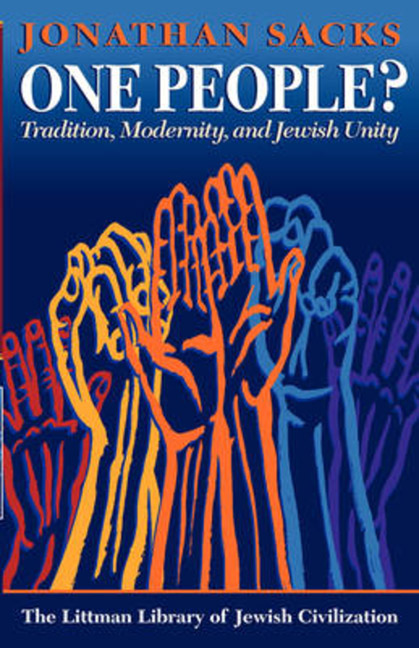Book contents
- Frontmatter
- Dedication
- Preface
- Contents
- Note on Transliteration and Place Names
- Abbreviations
- 1 The Crisis of Contemporary Jewish Thought
- 2 The Birth of the Adjectival Jew
- 3 Orthodoxy, History, and Culture
- 4 Orthodoxy and Jewish Peoplehood
- 5 Tradition and Diversity
- 6 Inclusivism
- 7 A Collision of Consciousness
- 8 Schism?
- 9 The Future of a People
- Bibliography
- Index
8 - Schism?
- Frontmatter
- Dedication
- Preface
- Contents
- Note on Transliteration and Place Names
- Abbreviations
- 1 The Crisis of Contemporary Jewish Thought
- 2 The Birth of the Adjectival Jew
- 3 Orthodoxy, History, and Culture
- 4 Orthodoxy and Jewish Peoplehood
- 5 Tradition and Diversity
- 6 Inclusivism
- 7 A Collision of Consciousness
- 8 Schism?
- 9 The Future of a People
- Bibliography
- Index
Summary
I HAVE described what seems to be the inexorable unfolding of tragedy. It is not merely that Orthodoxy and Reform are drifting further apart as the one rejects, the other adapts to, an increasingly secular and individualist culture. It is that the desire for unity is itself inherently and paradoxically divisive. The reason is that each side holds a different concept of unity: one inclusivist, the other pluralist. These two ideas are incompatible. They systematically exclude one another. The result is that the more vigorously unity is pursued, the further it recedes. An apparently shared wish that Jewry be ‘one people’ is, it seems, destined to be frustrated by conceptual impasse and mutual incomprehension.
Was and is this inevitable? It is the result, let us recall, of the impact of enlightenment, emancipation, and secularization on a people that had hitherto been defined by halakhah, the constitution of Jewish law. This gave rise, initially in Germany and Austria and subsequently in America, to a series of religious denominations-Reform, Liberal, Conservative, and Reconstructionist-each of which involved a reinterpretation of the key terms of Jewish existence, especially of halakhah. Judaism had previously known differences and disputes: between Ashkenazim and Sephardim, rationalists and mystics, followers and critics of Maimonides, Hasidim and their opponents. But however acrimonious the arguments, the commitment of both sides to halakhah had prevented their deterioration to the point of schism.
Differences of a larger order, between Jews and early Christians, Rabbanites and Karaites, the rabbinic mainstream and the seventeenthand eighteenth-century messianic movements of Shabbatai Zvi and Jacob Frank, had eventuated in fundamental splits that could not be contained within a single religious order. There is no precedent since Second Temple times for the coexistence of denominations, rival systems, fundamentally differing interpretations of Judaism. Nor does the Second Temple period, with its internecine rivalries and wars, provide a reliable model on which to predicate the present. Is there, then, a different route by which the collision between tradition and modernity might be negotiated, one that does not involve the fragmentation of Jewry into denominations? If so, might it yet be taken? If not, what are the implications?
- Type
- Chapter
- Information
- One People?Tradition, Modernity, and Jewish Unity, pp. 169 - 195Publisher: Liverpool University PressPrint publication year: 1993

